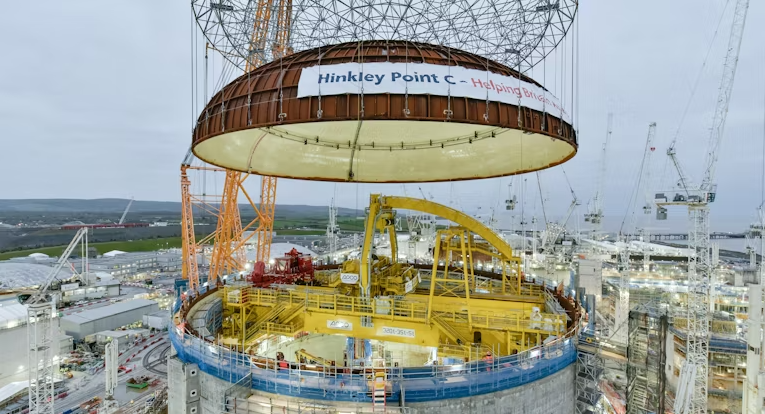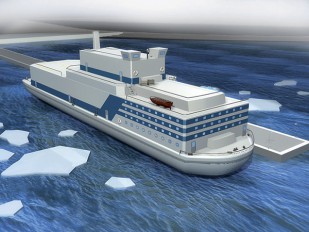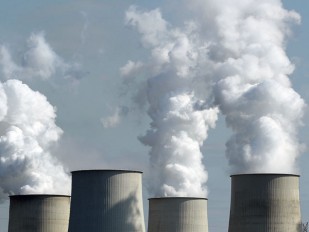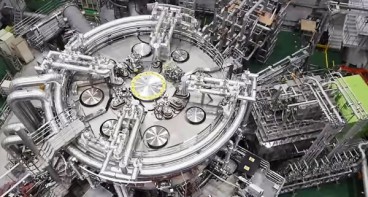Securing Energy Supply Through Standardised Nuclear Construction

Britain is advancing its nuclear programme with Sizewell C in Suffolk, designed as a near-identical counterpart to Hinkley Point C in Somerset. This approach of standardisation is expected to lower costs and reduce construction timelines by reusing designs, suppliers, and methods. Lessons from Hinkley, such as assembling reactor vessel components in controlled indoor environments, have already improved efficiency. At Sizewell, these practices are regarded as a direct continuation of Hinkley’s build sequence, often referred to as “Unit 3 and Unit 4,” with expected savings in both time and resources before ground is even broken.
Policy frameworks are evolving as government and industry explore new siting opportunities for nuclear plants. Current restrictions prevent facilities from being located near semi-urban areas, a precaution dating back to older technologies. The nuclear industry is advocating for reforms to accommodate emerging solutions such as small modular reactors (SMRs) and advanced modular reactors (AMRs). These compact systems, potentially positioned near industrial hubs or energy-intensive users like data centres, represent a future expansion path alongside large-scale plants.
Financing remains a central issue. For Hinkley Point C, the cost of financing accounted for a significant portion of the project. By reusing established designs and processes at Sizewell C, the predictability of delivery is expected to attract capital at more competitive rates. Models such as the Direct Procurement for Customers (DPC) framework, where third-party providers finance and operate infrastructure under regulatory oversight, are becoming increasingly relevant to large energy projects. These structures aim to balance risk, encourage private investment, and provide long-term resilience for the UK’s energy system.
While new builds take shape, long-term sustainability also depends on effective waste disposal. Deep geological repositories (DGRs) remain the preferred solution worldwide, providing multiple barriers, both engineered and natural, to prevent radionuclide migration. Ongoing research focuses on corrosion resistance of containment systems, bentonite clay behaviour, and the generation of gases within repository environments. Strengthening this knowledge base is vital for ensuring safe isolation of nuclear materials and maintaining public confidence in nuclear as a sustainable energy source.
Sources: economist.com, no2nuclearpower.org.uk, nucnet.org
Want to read more like this story?

Nuclear Progress: Hinkley Point C Marks Reactor Installation Milestone
Dec, 04, 2024 | NewsThe Hinkley Point C nuclear power plant in Somerset, England, has reached a significant milestone w...

Fast-Track Nuclear: How the UK–US Partnership Accelerates SMRs and Microreactors
Sep, 20, 2025 | NewsThe Atlantic Partnership for Advanced Nuclear Energy outlines closer UK–US collaboration to deploy...

What should countries do with their nuclear waste?
Nov, 11, 2025 | NewsA comprehensive review from Massachusetts Institute of Technology (MIT) addresses strategies for th...

First-ever floating nuclear power plant is under construction in Russia
Oct, 19, 2016 | NewsThe plant is set to start providing power and heat to the country’s remote northern regions by...

The Price of Progress: Why UK Infrastructure Costs Need Reform
Oct, 10, 2024 | NewsThe rising costs of infrastructure projects in the UK have been a significant concern for decades,...

UK's nuclear facility under construction on the brink of abandonment
Jan, 15, 2019 | NewsHitachi, a Japanese firm, is considering pausing the construction works of a new nuclear power stati...

Japan inaugurates world’s largest nuclear fusion reactor
Dec, 01, 2023 | NewsThe world’s largest nuclear fusion reactor was inaugurated in Japan on the first of December, marki...

Scientists are trying to make nuclear fusion a viable alternative energy source to fossil fuels
Oct, 04, 2017 | NewsIf they can manage to control the reaction safely, it will be a big step forward for a clean, safe,...

Data-Driven Siting: Revolutionizing Renewable Energy Efficiency
Dec, 20, 2024 | NewsBuilding efficient solar and wind farms requires more than just identifying areas with the most sun...
Trending

Characteristics of Load Bearing Masonry Construction

Taipei 101’s impressive tuned mass damper

Morocco Implements Landmark Dam Perforation to Combat Water Stress in Marrakech

Dutch greenhouses have revolutionized modern farming

The Line at Neom faces feasibility reassessment while construction continues

The Line at Neom faces feasibility reassessment while construction continues


